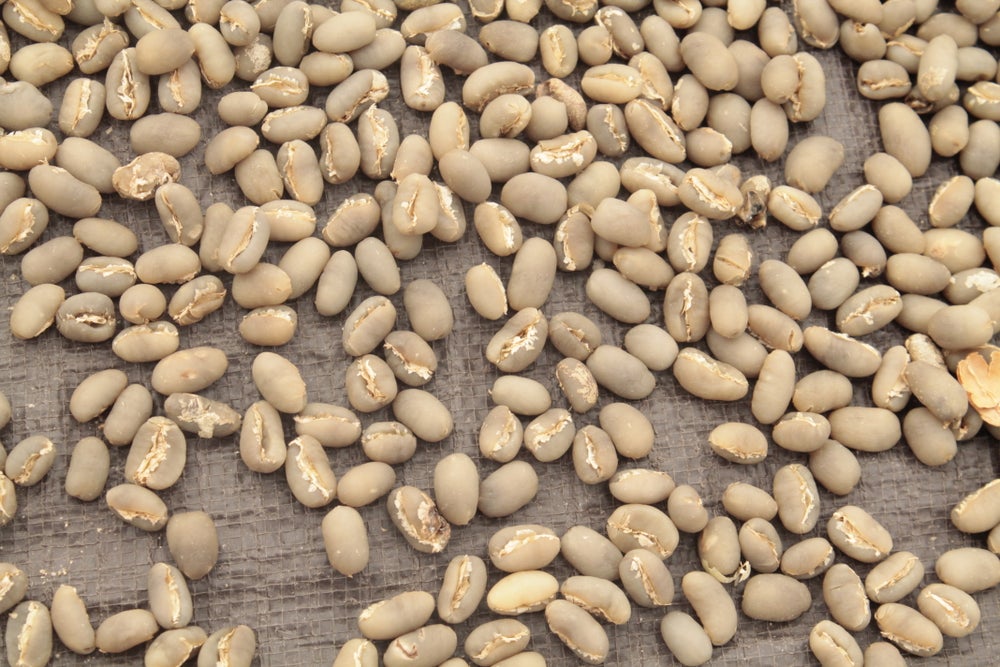About This Coffee
Koperasi Kopi Gayo Organik (KKGO) was formed in 2006 through a partnership with PT. Ihtiyeri Keti Ara (IKA). The 1,435+ coffee-producing members live and farm in four districts in Aceh: Sabun, Atu Lintang, Jagong, and Bergendal. It’s no coincidence that these districts are well known for producing some of the highest quality coffee in Aceh, already renown for high quality coffee.
Cultivation
In addition to coffee, KKGO members frequently intercrop lamtoro, orange and tamarillo trees, which provide shade and food for selling or consuming.
Harvest & Post-Harvest
KKGO members deliver cherry and parchment to IKA’s washing station in Jagong. Coffee is later processed at IKA’s warehouse in Takengon and then transported to Medan for export.
About Giling Basah: Wet Hulled Process
Indonesia is perhaps best known for its unique wet hulling process (giling basah). Though its exact origins are unclear, wet hulling most likely originated in Aceh during the late 1970s.
Wet hulling’s popularity can be attributed to producers’ need for prompt payments. It was also adopted specifically by many producers who lacked the drying infrastructure that was needed to shelter drying parchment from the high humidity and inconsistent rainfall typical in Sumatra. At higher elevations with constant humidity and unpredictable rainfall, drying can prove to be slow, risky and difficult.
The basic process for wet hulling is as follows: Cherry is harvested and pulped at or near the farm on small hand-cranked or motorized pulpers. The coffee is fermented overnight in small tanks, buckets, or bags and washed with clean water the following morning. Parchment is sundried for between half a day and two days, depending on the weather. This first drying is for skin drying, which eases the removal of parchment.
At this juncture, the moisture content is between 30 and 40%. Parchment is delivered to a processor (often by the village collector) for wet hulling. A wet hulling machine is larger, requires more power and runs at a faster speed than a traditional dry huller. After the hulling, the coffee seed is whitish and pliable and is called labu. It is laid out to dry on tarps or patios, where it reduces in size and reaches 14 to 15% moisture content. This stage is known as asalan and is unsorted and with defects. Much of the internal commercial trade is for asalan. Exporters, most of whom are based in Medan, will finish the drying down to 12 to 13% moisture content and will sort and prepare coffee for shipment.
Our premium and specialty wet-hulled coffees are produced in direct collaboration with village collectors and processors so that the drying, storage and lot integrity remain in place from the farmer all the way to you. In this way, we can export cleaner, more stable and more traceable regional lots.
Coffee in Indonesia
Indonesia has a long coffee producing history, but recently their coffees have been overlooked by the specialty market. Thanks to our innovative and ever-expanding supply chain, we are proud to bring you high-quality coffees from many of Indonesia’s unique regions, accompanied by in-depth traceability information.
Indonesia is perhaps best known for its unique wet hulling process (giling basah). Though its exact origins are unclear, wet hulling most likely originated in Aceh during the late 1970s.
Wet hulling’s popularity can be attributed to producers’ need for prompt payments. It was also adopted specifically by many producers who lacked the drying infrastructure that was needed to shelter drying parchment from the high humidity and inconsistent rainfall typical in Sumatra. At higher elevations with constant humidity and unpredictable rainfall, drying can prove to be slow, risky and difficult.

